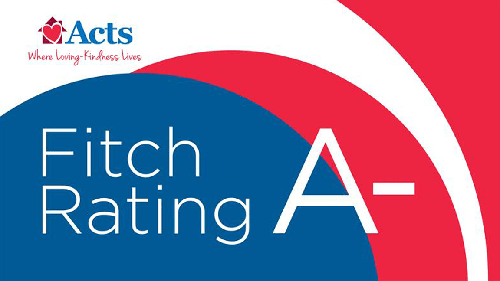An Overview of Senior Living Options

If you’re wondering what type of senior housing option may be right for you, you’re not alone. With so many retirement living options available today, it can feel overwhelming to figure out which path is best for your current needs and future plans.
From independent living to assisted living, and even continuing care retirement communities (CCRCs), each type of community offers its own unique blend of services and lifestyle benefits. The key is finding what fits your health, social preferences, and financial goals.
Let’s explore the most common types of senior housing options and help you determine which one makes the most sense for your retirement journey.
What are the Main Senior Living Options?
- Aging in Place
- Independent Living Communities
- Assisted Living Communities
- Skilled Nursing Care Communities
- Continuing Care Retirement Communities
- Moving in with Adult Children
- House Sharing
1. Aging in Place
Aging in place refers to staying in your current home as you grow older. This option is best suited for seniors who are relatively healthy, have a strong local support system, and can modify their homes for accessibility.
While aging in place offers familiarity, it often requires hiring in-home caregivers or making costly home upgrades over time. For many, these downsides lead them to explore more structured retirement living options later on. Especially to avoid the predictable cost of increasing property taxes and the unpredictable cost of home improvements projects like a new roof or water heater.
2. Independent Living Communities
Independent living communities are ideal for older adults who are self-sufficient but want fewer responsibilities and more social opportunities. Residents enjoy private apartments or townhomes and a lifestyle focused on:
- Social connection
- Enrichment activities
- Low-maintenance living
- Optional amenities like dining, housekeeping, and fitness
Independent living communities generally don’t provide extensive healthcare services unless they are a CCRC (more on that later), making them ideal for those who don’t require or expect to require medical attention but are looking to downsize.
3. Assisted Living Communities
For those who need help with Activities of Daily Living (ADLs) like dressing, bathing, or managing medication, assisted living communities offer support in a residential setting. They provide:
- 24/7 staff assistance
- Daily meal service
- Social and recreational activities
- Personalized care plans
These communities provide a special combination of residential housing and healthcare services to adults who may pose safety concerns by living alone. They’re a great middle ground for seniors who still want independence but could use a helping hand.
4. Skilled Nursing Care Communities
Also known as nursing homes, these facilities offer 24-hour medical care for individuals with complex health needs or chronic conditions. They are staffed with licensed nurses, doctors, and therapists to manage:
- Post-surgical recovery
- Long-term illness
- Alzheimer’s or dementia care
Skilled nursing care communities ensure a high level of support for residents with diverse medical requirements.
5. Continuing Care Retirement Communities
Continuing care retirement communities (CCRCs), sometimes known as life plan communities, offer multiple levels of care in one place - from independent living to assisted living to skilled nursing care - all on one campus.
CCRCs are among the most flexible types of retirement communities, allowing you to transition between levels of care without moving off-campus or paying increased costs. Many CCRCs, like Acts Retirement Community’s, offer fixed-rate contracts so your costs remain predictable even if your care needs change over time.
CCRCs are ideal for seniors who want to plan ahead and ensure stability, community, and peace of mind in the years ahead.
6. Moving in with Adult Children
7. House Sharing
How to Choose the Right Retirement Option
There’s no one-size-fits-all answer when it comes to retirement living options. Your ideal situation depends on factors like:
- Health and mobility
- Financial stability
- Social preferences
- Proximity to family
- Long-term care needs
- Your desire to have your long-term budget better accounted for
If you value staying in your current home and have the means to modify it over time, aging in place may suit you. If you want a more community-based lifestyle with access to healthcare when needed, a CCRC might be your best fit.
Waiting too long to plan for future care could leave you with fewer, more expensive options. Choosing a flexible, future-proof solution, like those options offered at Acts Retirement-Life Communities, can help you avoid that risk.
Why ADLs Matter When Choosing Senior Housing
Your ability to perform Activities of Daily Living (ADLs) like eating, dressing, and bathing can help guide your decision. If you can manage these tasks independently, options like independent living or CCRCs with an independent tier may work well.
However, if you or your spouse are starting to need more help, it’s a good idea to explore assisted living or skilled care options sooner rather than later. It’s worth nothing that at a CCRC, you can be in one level of care while your spouse is in another, still on the same campus with the same group of friends.
How Much Do These Senior Living Options Cost?
Cost is a key factor in choosing a senior living arrangement. Generally, the more care you need, the higher the cost. That said, CCRCs often provide the best value by bundling housing, amenities, and future care into one predictable monthly fee.
For example, a one-bedroom apartment in a CCRC often includes:
- Dining plans
- Maintenance and housekeeping
- Social activities
- On-site healthcare access
At Acts Retirement-Life Communities, pricing is transparent. Residents benefit from fixed-fee structures where increased care needs don’t mean increased costs, providing real peace of mind.
To learn more about Acts communities and find one that might be right for you, take a look at our communities.
Read Our Senior Living Community Resources Below
- Senior Living in Wilmington, DE: A Day in the Life of a Resident
- Finding the Best Places to Retire in Pennsylvania
- Retire in the Florida Panhandle: Discover Pensacola, Fl
- Senior Independent Living in Gainesville, GA: Get the Inside Scoop
- Making a Retirement Decision: Everything You Need to Know About Senior Living in Lansdale, PA
- Where to Retire in Delaware County, PA: Culture, History, and Commerce
- Easy, Breezy Living in Coastal Beauty: 6 Reasons You'll Love Senior Living in Pensacola
- A Growing Southern City with Charm: 9 Reasons Why to Retire in Huntsville, Alabama
- 10 Reasons to Spend Your Golden Years Retired in Florida
- 6 Reasons You Should Consider Retiring in Georgia
- Want to Retire to Delaware? 10 Reasons Why That’s a Great Idea
- Thinking About Retiring to Maryland?
- 11 Wonderful Reasons to Retire to Alabama
- 5 Retirement Community Myths Dispelled
- What’s So Great About Retirement Living in Pennsylvania?
- 10 Good Reasons to Retire to South Carolina
- 18 Reasons to Retire in North Carolina: Retiring in NC
- Retiring to Florida Has More Benefits Than a Friendly Climate
- The Acts Lifestyle
- 28 Campuses in 1






